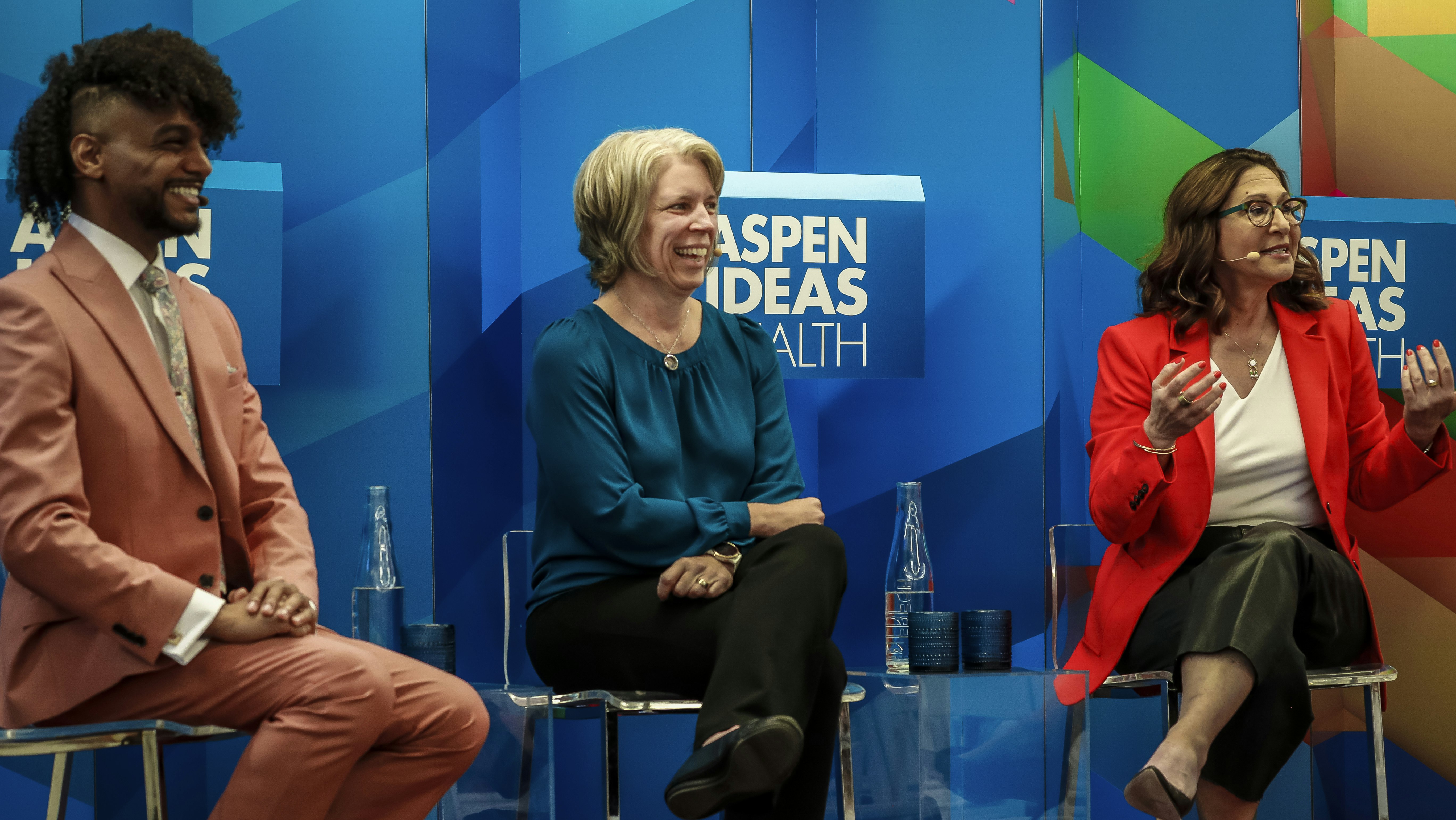

As the Executive Director of the Translational Research Institute for Space Health (TRISH) at Baylor College of Medicine, Dorit Donoviel is leading the effort to build a collaborative knowledge base that can be used by scientists, physicians, and those building spaceships and habitats that safeguard human health. During Aspen Ideas: Health, she took part in fascinating conversation about the ways in which space research and innovation are helping to advance health on Earth. We caught up with her for a Q&A to learn about TRISH's current work and the promise of this new era of space travel.
For more than 60 years, NASA has pushed the boundaries of human exploration of space, but the commercial spaceflight revolution is now well underway. Tell us about TRISH’s role as we enter this new era.
We are at the cusp of truly making space more accessible to everyone, not just government astronauts. And it’s not just for billionaires. Many nations from around the globe view accessing space as a driver for technological and educational discoveries and advancements. These nations can now send their scientists and educators to space through private companies. TRISH’s mission is to make sure that every human that goes to space (no matter their age, previous medical history, or race) can do so in a healthy manner. We have established the only unified and centralized research program in human health in space where we collect standardized physiological measurements and biological samples before, during and after spaceflight so that we can learn more about human adaptation to this incredible environment. The goal is to build a knowledgebase that can be used by scientists, physicians, and those building spaceships and habitats that safeguard human health.
What makes space such a unique laboratory to study the human body and conduct biomedical research?
The lack of gravity, the exposure to increased ionizing radiation, the confined space, all challenge the human body and mind in unique ways. By studying how each person adapts to these environmental exposures and whether we can prevent or reverse certain maladaptive changes, we are gaining new insights about human physiology and the biomarkers of early development of diseases that affect many on earth. The changes in space occur quickly and in general are completely reversible. This allows us to study conditions that on Earth may take years to develop and are often not reversible. As scientists, we see the value of this model as unique.
The science that happens in space doesn’t stay in space. Can you share some examples of the ways in which space research and innovation have helped advance health on Earth?
Thousands of innovations that we take for granted here on earth have come from space innovations. Satellite communications, new golf club materials, memory foam, GPS, and many more. In the medical world where we focus, life-saving continuous insulin-pumps, ventricular assist heart devices, medical imaging techniques that have identified early cancers, have all come from space innovations. More specifically, new knowledge that came directly from space medicine that has transformed life for people on earth includes the exercise programs that were developed for astronauts whose hearts become deconditioned in zero-gravity have been used to enable many women with Postural Orthostatic Tolerance Syndrome (POTS) lead a normal life. In our own work, we are pushing the boundaries with studying a novel syndrome that affects most astronauts by affecting their vision and likely their brains. Spaceflight Associated Neuro-ocular Syndrome (SANS) is thought to be caused by the lack of gravity and may be increasing pressure on the brain. We worked with the FDA and brought to the US a novel device from Europe that can measure pressure on the brain continuously and using a remote sensing device. We are about to test this in a private astronaut, but patients with hydrocephalus (adults and babies) or intracranial hypertension due to traumatic brain injuries will greatly benefit from the FDA approving this device not just for our research study, but for clinical use. It’s a game-changer for patients and their doctors.
In the spirit of collaboration and service to mankind, how is open science being considered by the larger space community?
TRISH has established its commercial spaceflight research program in such a way as to insist on data sharing agreements being signed before any experiment is funded and carried out. We have also encouraged our research subjects (private astronauts) to give their consent even far into the future and allow a privacy data release board that TRISH has established to decide on their behalf on the merit of future requests to use their data. This really removes all the red tape and delays in other programs where reconsenting the subjects becomes a huge barrier. We have also ensured that the data is collected in such a way to include all the experimental and environmental parameters so that cross-referencing can be done across multiple datasets – from the human subjects, the environmental sensors, across a crew within a mission, or across missions with different spaceflight companies or time spent in space. We’ve also standardized certain measurements across all subjects, all missions, all durations, so that we can compare apples to apples. Finally, we carefully selected a database vendor that is incredibly agile and is annotating the datasets with a best-practice data dictionary to enable easy querying.
From stem cells and pharmaceuticals to 3D bioprinting and food science, space is increasingly being embraced as the next frontier for health-related research. What has you most excited for the future?
Space is the ultimate confined and limited resource environment. You cannot take any limited consumable or equipment for granted in space. Water, air, energy, food, medications, exercise equipment, medical equipment or knowledge, information, social interactions, mental health stimulation all are limited and precious. By figuring out how to conserve and do with very little, we are pushing the boundaries on conservation and human health here on Earth for a time when some of these resources become scarcer. At TRISH we thrive on solving hard problems. These challenges are not going to be solved by any nation alone. We see space as a wonderful opportunity to unite people from across the globe to work on an exciting future for all.
*The views and opinions of the author are their own and do not necessarily reflect those of the Aspen Institute.
____________________________________________________
For more about the promise of space to advance health on Earth, watch Dorit's full Aspen Ideas: Health conversation with Tara Ruttley of Blue Origin and Nicholas St. Fleur of STAT.




